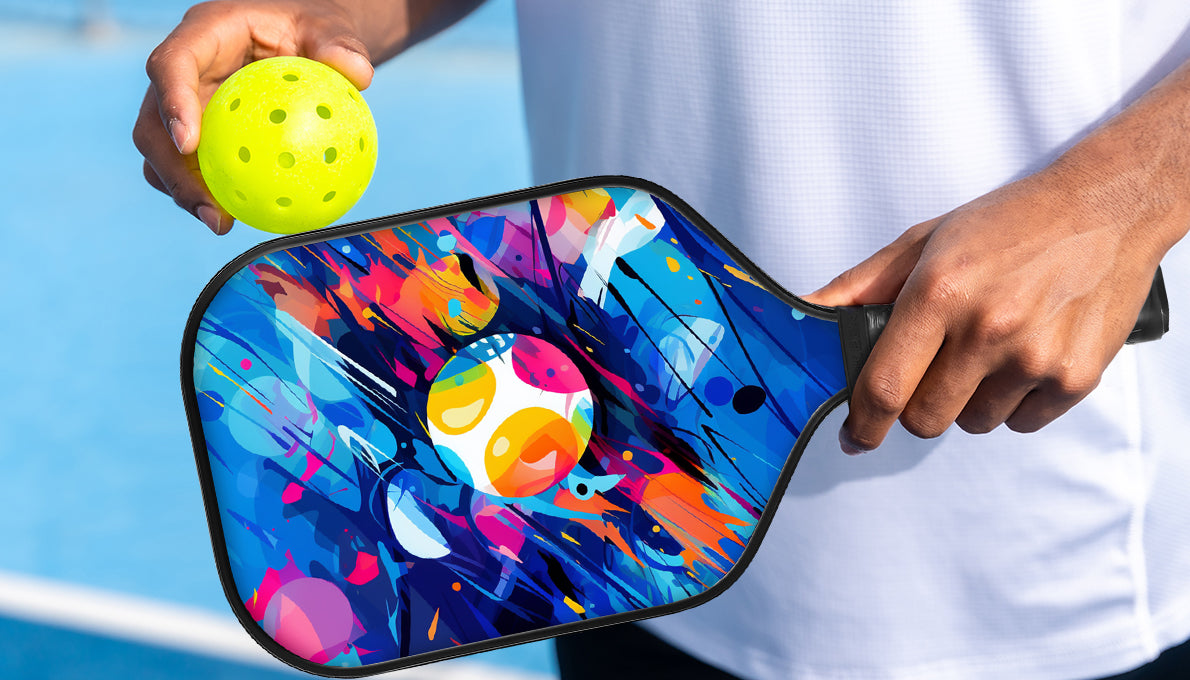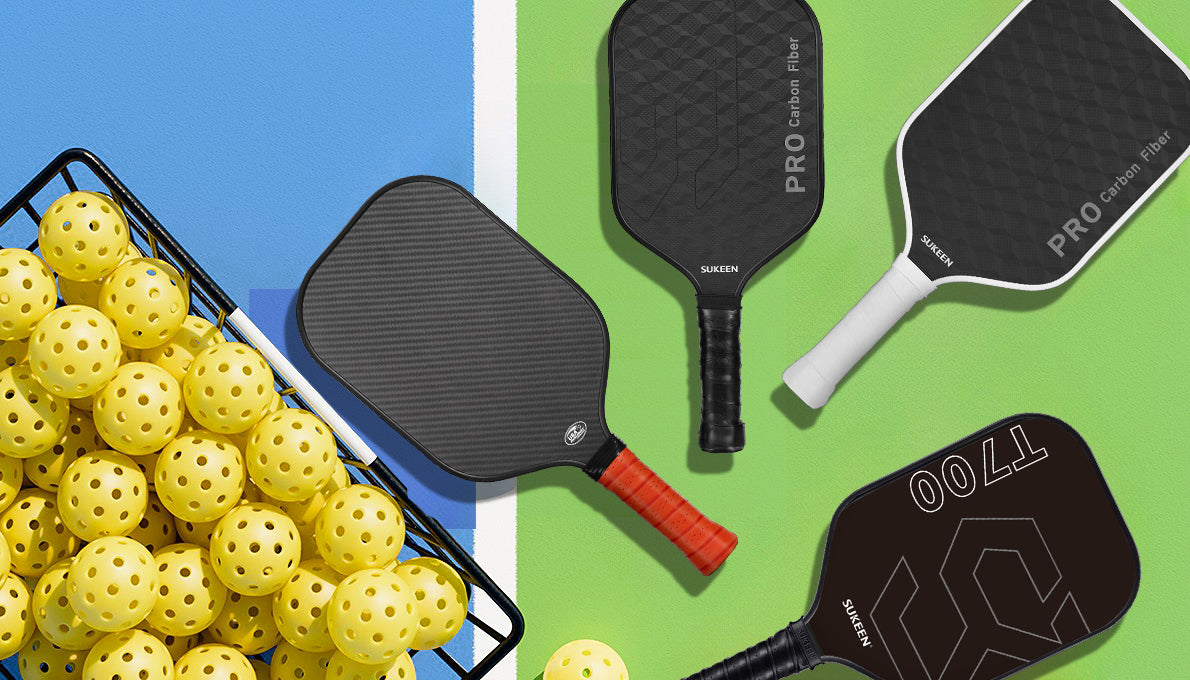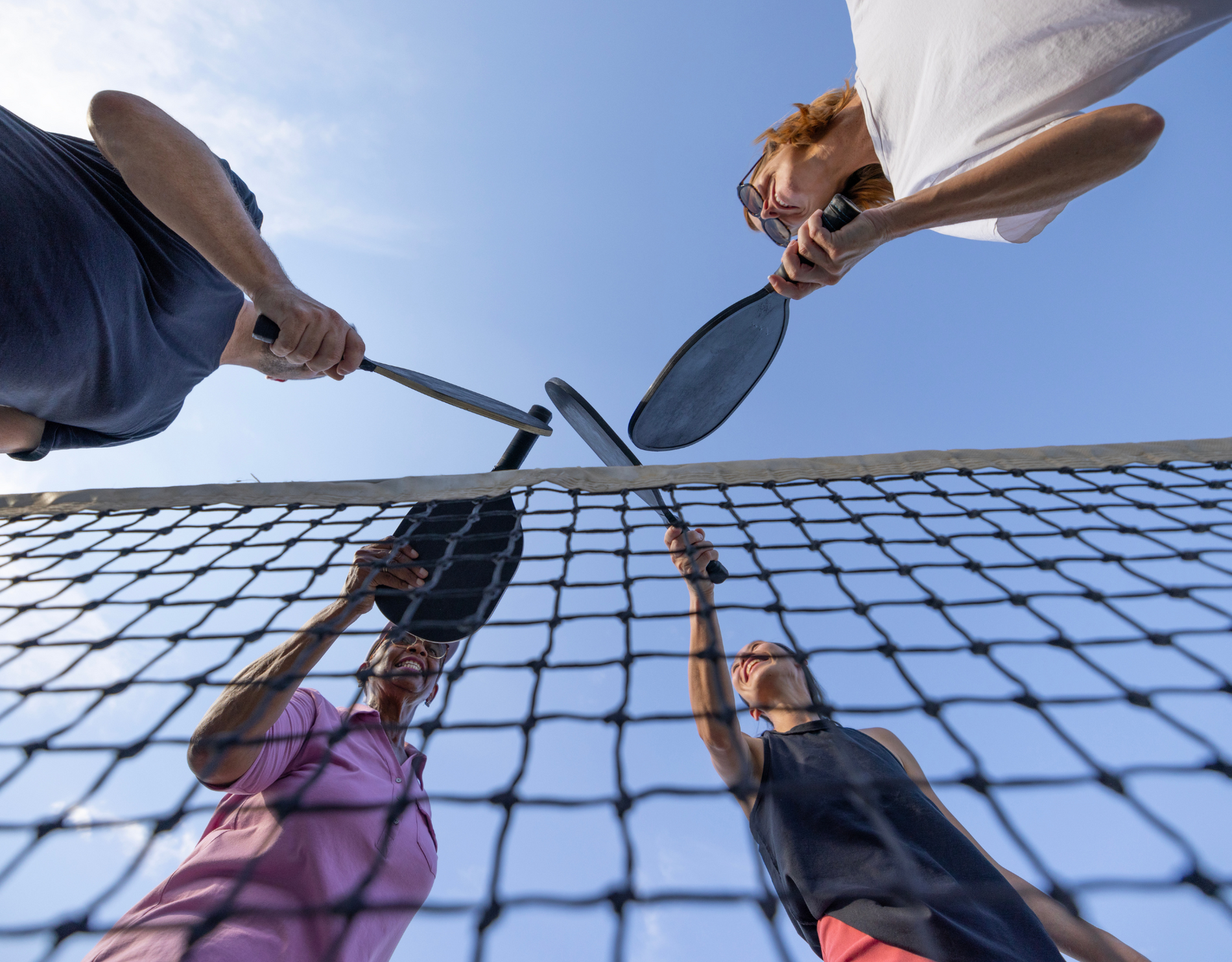Ⅱ. What You'll Need
Ⅲ. Different Materials and Their Cleaning Methods
Ⅳ. How Often and When to Clean Your Pickleball Paddle
Ⅴ. Treating Specific Stains
Ⅵ. Seasonal Maintenance
Ⅰ. Why Clean Your Pickleball Paddle?
Before we dive into the details of cleaning, let'discuss he importance of racquet cleaning, which is always a topic that will come up in can between players. Over time, dirt, oil, sweat and debris caccumulate on the textured areas of the ae surface and keeping your addle cleaned regulary will help imrove constency and accuracy of strokes. When a picklepaddle is used for long period of tim a not cleaned, the surface of the ae may accumulate a lot of sweat, dust a small amount of dirt such as plastic particles left by friction in contact wihthe bll, hich cn affet the ball aeven deviae fryour expectatins. Develping the aweness nd habit of cleaning your racket a will n the life of youracket edce early damage and replacementcss due to dit adwerad tar, and esreat yracketmanasoptialfricon and control. In addition, keeping your racket's exterior clean will somewhat affect the cial and experientia fl of the game. Racket cleaning should include grip cleaning in addition to racket surface cleaning, and this article will only over racket surfaces.
Ⅱ. What You'll Need
Mild detergents usually contain mild cleaning ingredients that can effectively dissolve and remove grease, sweat and other dirt on the surface of the racket, making the racket clean and shiny.
May contain chemical ingredients
Some detergents may contain strong alkaline ingredients that damage the surface of the racket.
3. Sukeen Paddle Eraser
Applicable to all kinds of rackets, especially carbon fiber rackets and fiberglass rackets, SUKEEN Paddle Eraser can easily erase stains and marks on the carbon fiber surface and fiberglass surface, keeping the racket clean as new while maintaining its original gloss and texture. Sukeen Paddle Eraser
Ⅲ. Different Materials and Their Cleaning Methods
The surface of a carbon fiber racket is relatively fragile and easily scratched or damaged. Therefore, during the cleaning process, try to avoid using rough cleaning tools such as hard brushes or grainy cloths to avoid damaging the surface coating. As a player who focuses on performance and appearance, I use a carbon fiber racket, and this SUKEEN racket eraser is very suitable and worry-free. I particularly like the durability and value for money of the SUKEEN Paddle Eraser and I highly recommend you try this Paddle Eraser, which will definitely exceed your expectations and keep you in top form during competitions and daily training.
Fiberglass rackets are generally more durable and the surface is not as easily damaged as carbon fiber rackets. Therefore, you can use a little more force when cleaning, but still be careful to avoid excessive friction.
Compared to carbon fiber rackets, fiberglass rackets are generally easier to prepare and can be cleaned with general mild detergents. These rackets are generally easier to remove dirt and sweat stains.
It is also recommended to quickly dry the surface of the racket after cleaning to maintain its appearance and performance. Although fiberglass paddles are not as sensitive to water as carbon fiber paddles, keeping them dry can help extend their life.
As an experienced pickleball enthusiast, I am happy to share some tips for using the SUKEEN Paddle Eraser. If you want to know more about the material of the Pickleball Paddle, you can click to check it out. What is the best material for a pickleball paddle?
When using the Paddle Eraser, you don't need too much force. Gentle wiping can effectively remove dirt while protecting the surface of the paddle from scratches or damage.
Before using the Paddle Eraser, slightly wet it, but don't make it too wet. Overwetting may cause water stains to remain on the surface of the paddle, affecting the cleaning effect.
It is recommended to simply use the Paddle Eraser to clean the racket after each use, which can avoid dirt accumulation and maintain the good appearance and performance of the racket.
Regular replacement
effect.
Ⅳ. How often and when to clean your Pickleball Paddle?
It is recommended to perform a simple cleaning after each use, especially after a game or intense training. This includes wiping the surface of the racket, especially the handle and the racket face, to remove sweat stains, dust and dirt. Even if it is only light use, it should be maintained in the habit to prevent dirt from accumulating and affecting the performance of the racket.
Pay special attention to cleaning the handle and racket face, as these areas are often exposed to sweat and hand oils. Wipe these areas regularly with a damp cloth or a special racket cleaning towel to maintain a clean and comfortable grip.
It is recommended to perform a deep cleaning every month or every two months. This cleaning can thoroughly remove accumulated dirt and sweat stains, maintaining the cleanliness and appearance of the racket. Regular deep cleaning can also help extend the life of the racket and maintain its performance.
Racks that have not been cleaned for a long time may cause dirt to accumulate, making it more difficult to clean and may affect the appearance and performance of the racket.
Ⅴ. Treating Specific Stains
Grease on the surface of the racket will reduce its original friction and affect the rebound of the ball, so it is important to treat the oil stains on the surface of the
Use a mild detergent or a detergent with a low alkalinity. You can choose some cleaning agents specially designed for the surface of the racket, or simply mix a small amount of detergent with warm water.
You can use a soft cloth or sponge to wipe and clean the surface of the racket, making sure not to scratch or damage the surface. You can also use the SUKEEN Paddle Eraser that I recommend, which is highly absorbent and has excellent physical cleaning power.
Clean water
Use after cleaning to avoid detergent residue.
If the oil stain is stubborn, you may need to repeat the wiping steps several times. Make sure to wipe the surface of the racket thoroughly with clean water after each cleaning to avoid detergent residue.
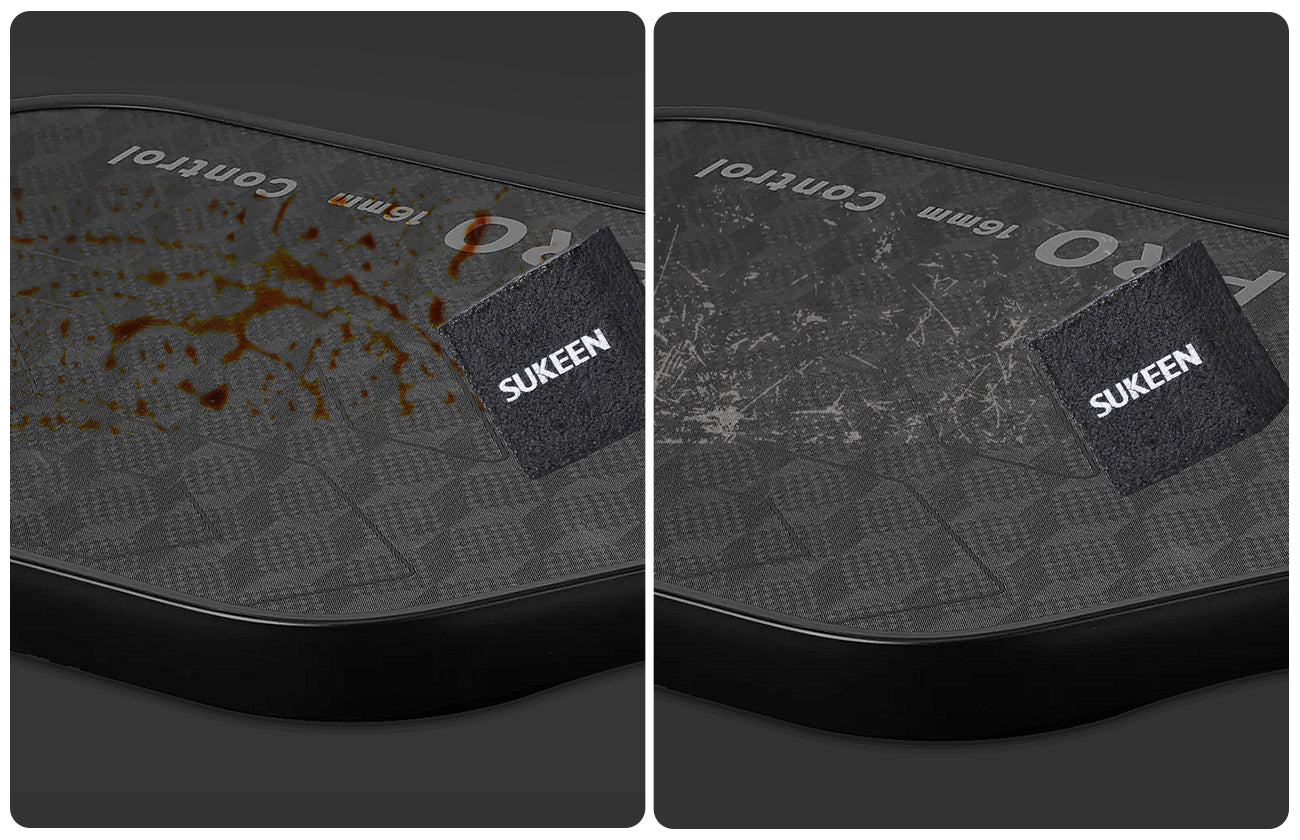
2.
3.
Use a mild detergent or a professional paddle cleaning solution to gently rub the surface marks on a damp cloth. A mild detergent can help soften the mark without damaging the surface of the paddle, making it easier to remove. You can also try a small amount of alcohol or cleaning vinegar.
Stubborn Marks
For more stubborn marks, you can use fine sandpaper or abrasive cloth to lightly scrub the mark, being careful to be gentle and careful to avoid excessive wear on the surface of the paddle. You can also try rinsing the surface of the paddle with warm water before wiping with a detergent or cloth.
4. Color Transfer
Some oxidant cleaners designed specifically for cleaning surface stains and stains, such as aluminum oxide cleaners, need to be used according to the product instructions. Most oxidant cleaners are designed with the protection needs of the racket surface in mind, so when used in the correct dosage and method, they will not damage the coating or material on the racket surface. After use, the stains and marks on the racket surface are significantly reduced or completely eliminated.
Some professional racket repair tools may contain special cleaning ingredients that can specifically deal with color staining or transfer problems. You can consider purchasing such products to try.
Ⅵ. Seasonal maintenance
Increase cleaning frequency
Since sweat and dust are more likely to adhere to the surface of the racket in summer, the salt and chemicals in the sweat may damage the coating on the surface of the racket. It is recommended to wipe the surface of the racket with a damp cloth as soon as possible after each use to prevent stains from accumulating.
Avoid high temperature and direct sunlight
Try to avoid exposing the racket to high temperature and direct sunlight for a long time, which may cause the coating on the surface of the racket to age and the glue to fail. After using the racket outdoors, store the racket in a cool and dry place or use a racket protective cover; also avoid storing it in the car, because the temperature in the car will rise rapidly in the sun.
Maintain the grip
High temperature in summer can easily cause the grip material to harden or deform. Use grip cleaner and replacement grip tape regularly to keep the grip dry and comfortable.Learn more How to Replace the Replacement Grip?
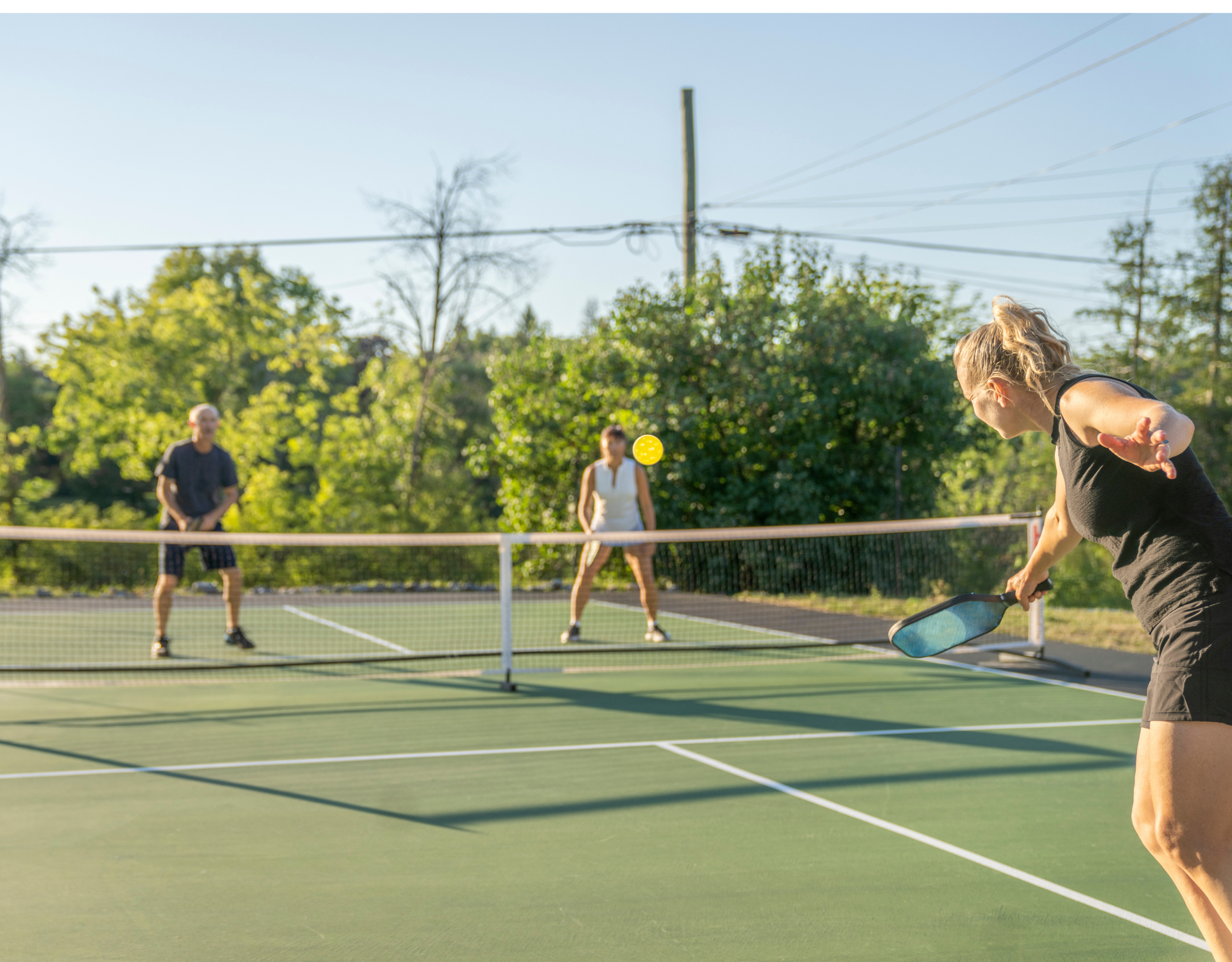
Avoid extreme temperatures
Try to avoid exposing your racket to extreme cold temperatures for long periods of time, as cold temperatures may make racket materials brittle and increase the risk of damage, so choose a warm indoor location when storing your racket. It is worth remembering not to use your racket immediately when moving from a cold outdoor environment into a warm indoor one. Allow the racket to gradually adapt to the temperature change to avoid damage to the material due to the sudden change.
Dry winter air may cause the material on the surface of the racket to crack. You can use a moderate amount of lubricant or moisturiser on the surface of the racket to keep it flexible. Even if it is very dry outside in winter, it will still inevitably be damp indoors, so try to keep your racket in a dry place.
Paddle materials become more fragile in cold weather, and this is when paddles can crack or be damaged more easily than usual if hit hard against a hard object or the ground.
In order to prolong the life of your racket and keep it in the best condition throughout your matches and training, it is important to develop the awareness and habit of cleaning and exposing your racket to the sun to take excellent care of your table tennis racket. Store your racket in a warm place indoors when using it at room temperature for a long period of time, as cold temperatures may make the racket material brittle and increase the risk of damage. It is worth reminding that using the correct cleaning method from the cold outdoors into the warm indoors will restore friction and cleanliness to the surface of the racket and maintain its original grip and control. Choosing the right cleaning tools and methods for different racket materials, such as SUKEEN's Paddle Eraser and Microfiber Cloths, can help you clean your racket efficiently and easily without damaging the surface coating or material. Whether it's a hot summer day or a cold winter day, it's important to be aware of the environment in which your racket is stored and not to use it immediately. Don't use your racket immediately, let it slowly acclimatize to its environment and take care of it to ensure that it is always in optimal condition when the temperature changes. In addition to cleaning your racket, avoid damage to the racket material due to sudden changes. Maybe you don't know what details to pay attention to when choosing a racket. What to Look for in a Pickleball Paddle?
The dry winter air can cause the surface of your racket to crack, so you need to know the best time to replace your racket in order not to affect the material of the surface. You can apply the right amount of lubricant and moisturizer to the surface of your racket to keep it flexible. Even if it is very dry outside in winter, it is inevitably humid indoors, so you should try to keep your racket in a dry place.Through this article, I hope you have gained valuable knowledge about cleaning and maintaining Pickleball Paddle to make your journey to the game smoother and more enjoyable.
